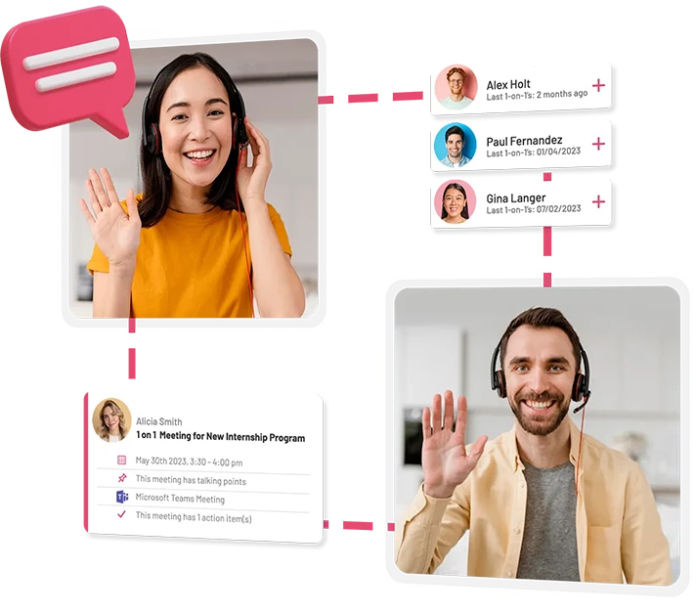Having an effective onboarding process for your new hires is one of the most important aspects of increasing employee retention. Welcoming new employees into your organization and helping them integrate smoothly will significantly impact engagement, productivity, and long-term retention. That’s where onboarding software comes into play.
Onboarding software are tools specifically designed to streamline and optimize the onboarding process in your organization. These software are the point where HR and technology meet to automate various tasks, centralize information, and provide a structured framework for introducing new hires to the company culture, policies, procedures, and job responsibilities. From initial paperwork to training modules, onboarding software simplifies and enhances the entire onboarding journey.
Effective onboarding sets the tone for the employee’s entire experience with the organization. It’s not just about completing paperwork and introducing employees to their team –a well-designed onboarding program helps new employees to feel welcomed, valued, and supported from day one. Providing employees with the necessary knowledge, tools, and resources to succeed in their roles and align with the company’s mission and values, investing in employee onboarding software is especially important in remote settings.
Streamlines Onboarding Process
Implementing onboarding software brings numerous benefits that streamline the onboarding process. Most importantly, onboarding software automates boring repetitive administrative tasks, such as filling out forms, gathering employee information, and distributing essential documents. Automating mundane tasks makes everyone’s job easier –both HR professionals and new hires!
You can design customized workflows and checklists that will create a structured onboarding experience using onboarding software. Tracking the progress of each new hire and detecting any missing steps in the process is easier than ever with onboarding software. You can choose an onboarding tool that also works as OKR software for the ultimate result.
And the best part is –onboarding software streamlines the communication between HR, managers, and new hires. Communication is key during onboarding, and onboarding software enables seamless collaboration and coordination, eliminating the need for constant back-and-forth emails or physical handoffs of documents.
Enhances Employee Experience
Onboarding software plays a pivotal role in enhancing the onboarding journey for employees, resulting in a positive and engaging experience. With onboarding software, organizations can create personalized onboarding journeys that cater to the unique needs and roles of each new hire. Through customized workflows and content, employees receive relevant information and resources tailored to their specific job responsibilities and department.
That’s not all! Onboarding software offers interactive and engaging materials that capture the attention of new hires by going beyond traditional methods of onboarding, such as lengthy orientation sessions or dry presentations. With features like videos, quizzes, and interactive modules, onboarding software transforms the onboarding process into an engaging and interactive experience.
Improved Training and Development
Onboarding software often includes integrated training modules or the ability to integrate with learning management systems (LMS). You can seamlessly incorporate training materials, videos, interactive modules, and assessments into the onboarding process without a hassle using LMS. Then your new hires can access these resources within the software, where they can get essential knowledge and skills relevant to their roles.
Onboarding software also helps to track and monitor employee progress during their training. You can easily monitor completion rates, quiz scores, and overall engagement with the training materials with the help of the software. You can criticize your onboarding process and make some changes when necessary, using this data.
Reduces Cost
As mentioned before, onboarding software automates various administrative tasks, such as data entry, form filling, and document management. Eliminating manual processes helps businesses save on labor costs associated with time-consuming administrative work. HR teams can focus their efforts on more strategic activities, resulting in improved productivity and efficiency.
With onboarding software, the need for physical paperwork is greatly reduced or eliminated. Instead of printing and storing numerous documents, everything can be stored digitally within the software. You can not only save on paper and printing costs but also reduce expenses related to storage and document management.
Onboarding software will give you a guarantee of accuracy and consistency throughout your onboarding process. Having automated workflows and standardized templates reduces the risk of errors or missing information, leading to fewer onboarding mistakes, such as incorrect employee data, missing documents, or incomplete tasks.
Conclusion
Investing in onboarding software offers numerous benefits for businesses and is worth serious consideration. Throughout this blog post, we have explored the advantages of using onboarding software, including streamlined processes, increased efficiency, consistent experiences, enhanced employee experience, improved training and development, and cost savings.
We recommend implementing onboarding software to streamline your onboarding process, save time and increase efficiency for HR teams. This type of software provides centralized platforms, automated workflows, and standardized templates that create a consistent and comprehensive onboarding experience for new hires.
Considering these benefits, you should definitely evaluate the adoption of onboarding software with your organization! Investing in good onboarding software will lead to improved onboarding experiences, increased productivity, enhanced employee engagement, and significant cost savings in the long run.
In conclusion, onboarding software is a valuable tool that can revolutionize the onboarding process and contribute to the success of businesses. Embracing this technology is a strategic decision that can bring about positive outcomes for both organizations and new employees.





